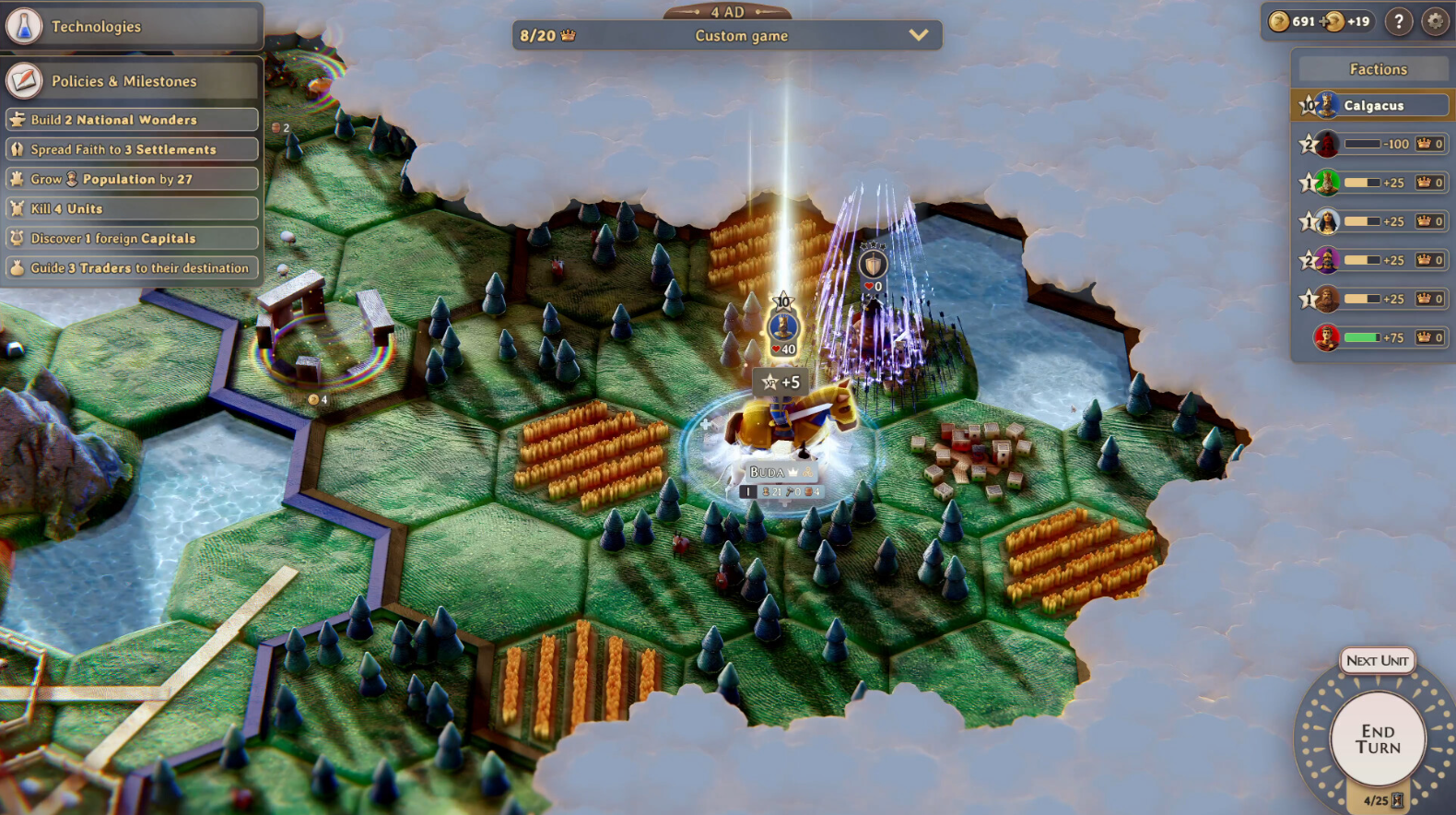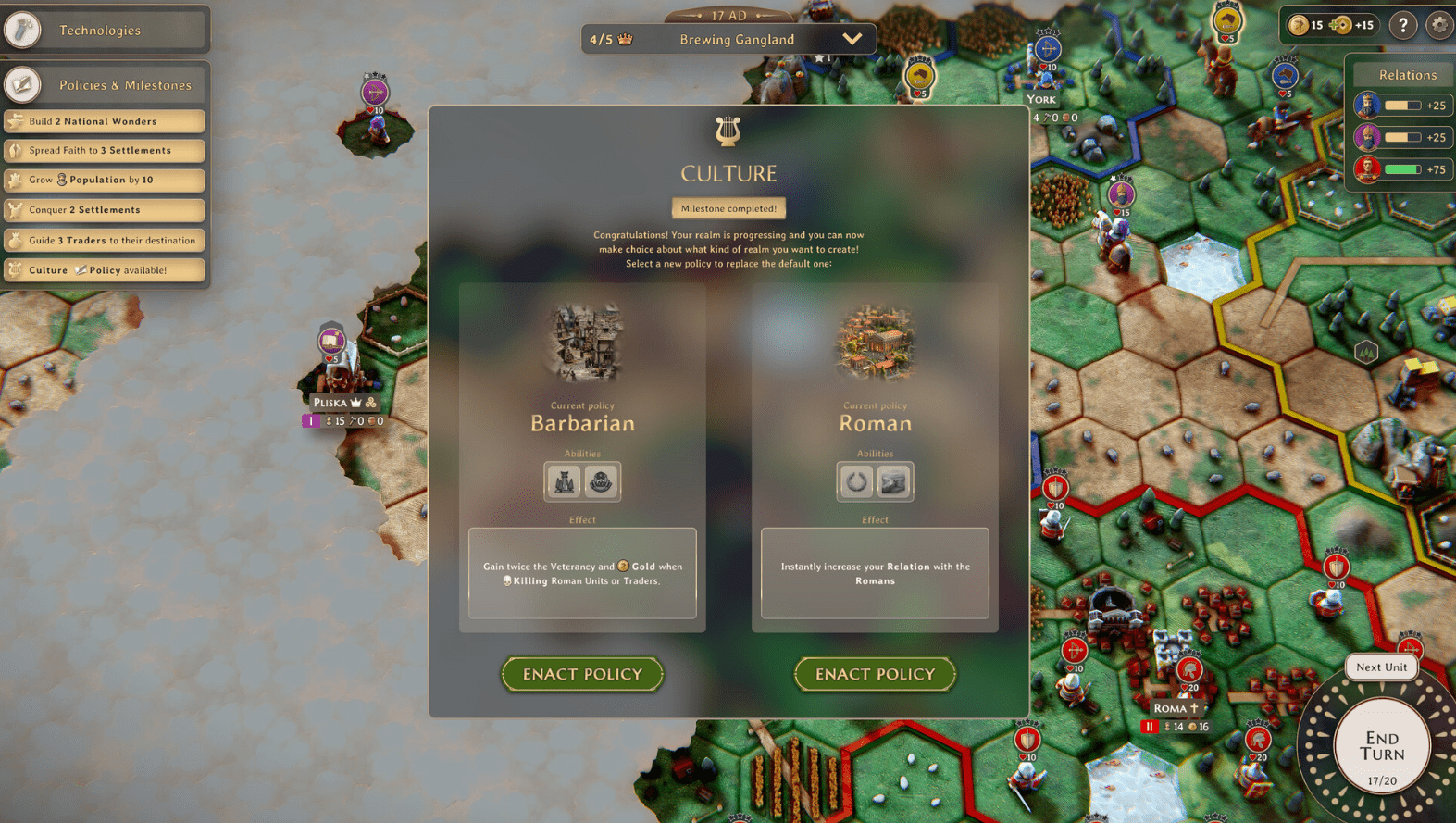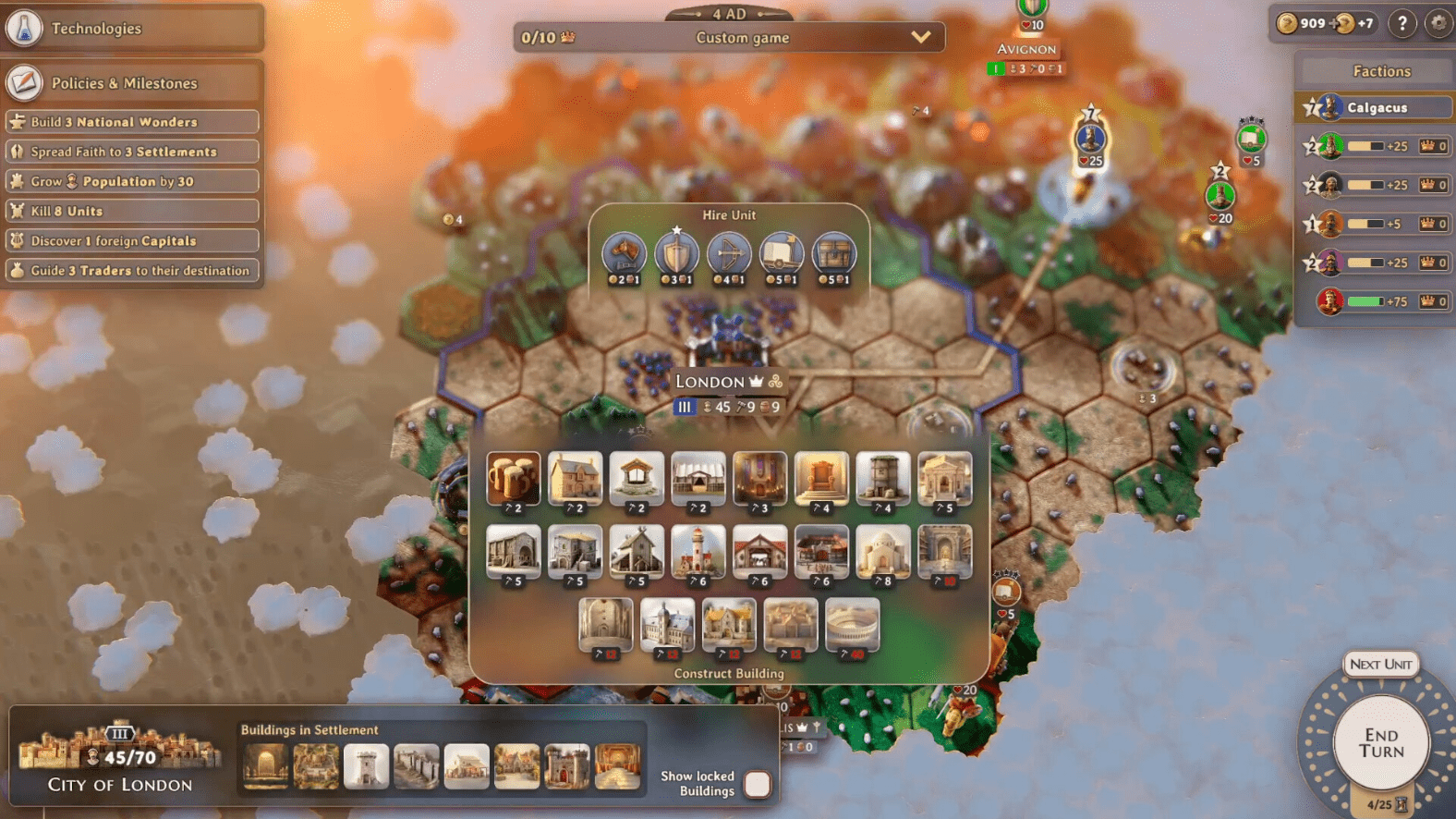Most historians talk about peak Roman history; few talk about the gradual, painful ebbing of the late Roman Empire. This period was one of true anguish. The empire stretched too far; politics were shredding from the inside, enemies were gathering on the borders, and cultures were clashing. This is just the background of Yield!- The Fall of Rome: a turn-based Roman strategy game that occurred during one of the chaotic times in history.
I played this game way back when, in the early access stage, but now, having played the actual game, I can tell that it’s completely different from those big and endless campaigns in historical strategy games in the vein of Civilization or Total War. Yield! The Fall of Rome is more about retraining quick strategic campaigns that take a few hours to complete. Those campaigns still have fast, near-endless, smaller decisions with big impact, yet you see them come to fruition in a matter of hours, not weekends.

In 401 AD, the start year of the game, is when the Western Empire of Rome is practically slipping from her hands. The armies in the empire are so weak, and the rival powers are under all sorts of pressures. Instead of playing as Rome, you can pick any of eight factions, each with unique units, advantages, and disadvantages.
The Sassanids bring strong cavalry from the east. The Berbers control the North African coast. Germanic tribes thrive in the forests. Then, of course, there are the Huns: fast and aggressive. Each faction changes the way you approach your campaign.
Unlike long-form grand strategy games, Yield! The Fall of Rome is built around mission-based scenarios. In one scenario, you might be defending against invasions; in another, you might be racing to capture cities or develop your economy. Victory is calculated in crowns, with each game being a race to achieve their crown target before the opponents.
This structure gives a feeling of being focused. There is no long-term play of slowly painting the map in your color. You are making swift, calculated moves. In this historical strategy game, time is precious, and every turn matters.
The core gameplay is still turn-based and played on a hex grid. You settle new areas, improve tiles, build cities, and train armies. But here is the catch: the developers cut out a whole lot of micromanagement considered unnecessary.
There is no science as such. Technology is bought with gold, which is also used to build structures, recruit soldiers, and upgrade units. That means there is only one type of currency, which obliges you to think carefully about any single purchase. Do I spend gold on military upgrades, or invest in something to grow my income later?
Land improvement is instantaneous once you have gold and tech. There is no waiting for workers to finish several turns. This keeps the game on the move.
Most missions are timed, so delaying is not on the cards. Every move is a step either closer to winning or wasting a much-needed turn.

The combat in Yield! The Fall of Rome is brutal. The AI is aggressive and punishes mistakes mercilessly. It is not enough simply to have more troops. Terrain, unit matchups, and positioning carry a lot of weight.
Every faction has its own combat strengths. Cavalry loses enemies on open ground, but they hardly ever win while fighting in the forests or the hills. Infantry never gets to finish fast ones off; they might, however, hold cities. In addition to these factions, the game features hero units- kings and queens. As they gain experience, they unlock special abilities that can tip the battle scales in your favor, but if you lose them, it could cost you the match.
The importance of every battle comes from crowns. You’re not conquering every inch of land possible; rather, you’re focusing on strategic places that inch you towards victory.
There have been moments where I sacrificed units just to slow an enemy down, and others were playing an all-or-nothing gamble to pull in that last crown just before time ran out.
One thing lacking is deep diplomacy. You can’t form alliances or negotiate very much. The game’s emphasis is on combat, which works really well for short campaigns but limits those who pursue peaceful strategies.
Each campaign is linked; thus, winning one mission sometimes nets you bonuses for the next one. They can be extra troops, better gear, or additional resources. There is a custom campaign generator that draws random maps and victory goals, hence adding to replay value.

The art style fuses board-game aesthetics with light 3D effects. The map is colorful without clutter; the UI is easy to read. Some parts read a touch mobile-game-ish, and a few factions could use more distinctive cultural detail, but overall, the atmosphere supports the fast pacing just fine.
The music creates what I would call an ambience without being repetitive. It captures chaos and tension typical of a decaying empire. I would have enjoyed it if there were much more variety, with themes for individual factions, but what we do have works pretty well. You may also be interested in: Deadzone: Rogue Review – A Gamer’s Honest Experience
At the end, Yield! The Fall of Rome is not trying to be an oversized or long-enduring strategy game. It is a fast-paced, historical strategy game that is for those wanting an entire campaign in a single sitting. Patterned with an easy learning curve, it does take some time with advanced planning and wisdom to master.
This one is worth playing if you like turn-based Roman strategy and don’t have killing hours. It gives you the thrill of building, fighting, and making hard choices-all without dragging on for days.





